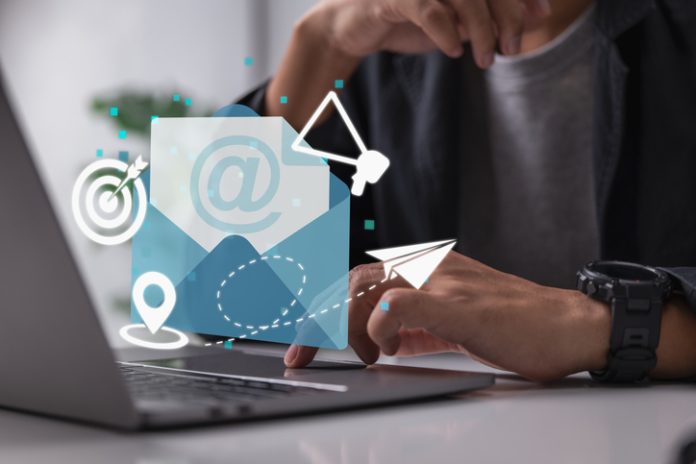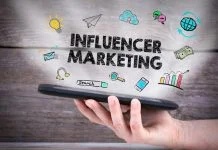By Stacy Kimbell
In today’s competitive ecommerce landscape, targeted email marketing stands out as a powerful strategy.
Sure, generic email blasts can yield some results. However, targeted campaigns are significantly more effective, and in this article, we will explain how to put these campaigns into action.
We’ll also showcase real-world examples of targeted email campaigns to help you unlock the full potential of email marketing for your ecommerce store.
What is targeted email marketing?
Targeted email marketing involves sending highly personalized messages to a specific segment of your subscribers.
Unlike traditional, untargeted email campaigns or generic blasts that send the same message to all subscribers, marketers can use targeted email marketing techniques to tailor content to individual needs and interests.
Your messages speak directly to each segment’s unique needs, preferences, and pain points. As a result, you get improved open rates, engagement, and conversion rates.
Benefits of targeted email marketing
Here are some of the key benefits of implementing targeted email marketing strategies:
- Increased engagement and conversion rates: Generic emails are often buried in inboxes. Targeted emails, on the other hand, pique customer interest by addressing their needs and preferences.
Customers are consequently more likely to engage with the content and ultimately purchase.
- Improved customer retention and loyalty: Personalized, targeted communication fosters a stronger customer connection. By delivering value and demonstrating an understanding of their needs, you can cultivate lasting relationships, improve customer satisfaction, and encourage repeat business.
- Higher return on investment (ROI): While targeted email marketing requires more upfront effort in data collection and segmentation, the payoff can be substantial.
You can reach the right customers with the right messages, maximize the impact of your campaigns, and generate more sales and revenue compared to untargeted efforts.
- Reduced costs: Email marketing is generally a cost-effective channel. However, targeted campaigns can further minimize your email marketing cost. If you send only small batches to specific people, you save money on email sends and earn more by sending highly relevant information.
- Reduced unsubscribe rates: When your emails are relevant and valuable to the recipients, they’re less likely to unsubscribe. Targeted email marketing also reduces the risk of overwhelming your audience with irrelevant content, helping you maintain a healthier subscriber list.
- Valuable customer insights: The process of segmenting and targeting your audience provides valuable insights into customer behaviors, preferences, and purchasing patterns. You can then use these insights for broader marketing strategies and product development.
How to create a targeted email marketing campaign
Creating successful targeted email marketing campaigns involves several key steps to ensure your messages resonate with the right subscriber segments.
Here’s a step-by-step guide to help you get started:
1. Build and segment your email list
You don’t need many subscribers to start sending targeted emails. the very beginning, for example, by setting up automations triggered by customer behavior, such as filling out the signup form or abandoning the cart. Send them highly relevant emails triggered by their actions.
The next step is the segmentation of your audience. It usually starts at 1000+ subscribers. Then, you can slice customer data by:
- Demographics: Age, gender, location
- Purchase history: Past purchases, purchase frequency
- Customer preferences: Interests, preferred product categories
- Engagement levels: Data on interactions with previous campaigns
- Browsing behavior: Pages visited, time spent on site
If the audience is very small (up to 1000 subscribers), your time invested in creating many complex segments won’t pay off.
2. Define your campaign goals and target segments
Clearly define your campaign’s objectives. These could include promoting a new product line, driving sales for a specific category, or re-engaging inactive customers. Then, based on your goals, identify the most relevant audience segments to target.
Having specific goals will guide your strategy and help measure success. Additionally, targeting the right segments with relevant content increases the likelihood of engagement, conversions, and customer loyalty.
3. Craft personalized and relevant content
Once you’ve identified your target recipients, create tailored content that addresses their specific interests and needs. Your customer data will help you understand the types of content that are most effective for each segment. For example, the customers have recently browsed wedding guest dresses. Send them an email with recommendations for even more occasional dresses.
Remember, personalization goes beyond addressing the recipient by name, so consider including:
- Dynamic content: With dynamic content blocks, you can show different images or offers to different segments based on the recipient’s profile
- Behavior-based triggers: Send emails triggered by specific actions to keep your content relevant and timely
- Relevant offers: You can send special discounts, product recommendations based on past behavior, or abandoned cart reminders to recent shoppers
- Personalized recommendations: Tailor product suggestions to individual customers based on their browsing and purchasing history to increase conversions
Keep in mind that different segments may respond better to different types of content. For instance:
- New subscribers: Send educational welcome emails with introductory offers
- Loyal customers: Provide exclusive deals and loyalty rewards
- Inactive subscribers: Re-engage with special discounts or personalized recommendations
Regardless of which segment you’re targeting, use a friendly and conversational tone. Additionally, highlight the benefits your products or services offer.
4. Use automation tools
Investing in email marketing automation and segmentation tools, such as Sendlane, Klaviyo, or Omnisend, can streamline the process of delivering targeted campaigns.
These tools ensure timely, consistent, and relevant communication, which they accomplish with the help of:
- Automated workflows: You can set up automated email sequences triggered by specific actions (e.g., a new customer signup, cart or browse abandonment, etc)
- Behavioral triggers: Send emails based on user behavior (e.g., product recommendations after a purchase)
- Scheduling: Plan and schedule emails to be sent at optimal times for each segment (e.g., follow-up email in a win-back series, birthday)
5. Test and optimize
Regular testing can refine your targeted email campaigns to improve performance.
One way to do this is by conducting A/B tests on subject lines, content, and design elements to identify what resonates best with each segment. You should also analyze open rates, click-through rates, and conversion metrics to optimize future campaigns.
Targeted email marketing examples
Here are a few examples showing the diverse applications of targeted email marketing:
1. Welcome series
Ideal for when a new subscriber joins, a welcome series helps familiarize your subscribers with your brand and provides relevant tips or resources. It’s effective due to increased personalization and timely delivery, which can significantly increase engagement rates.
Here’s a prime example from CommuniTea, showing the brand’s journey along with a discount code.
2. Abandoned cart reminders
These emails are triggered when a customer abandons their online shopping cart. They can include product recommendations, discounts, or just a reminder to complete a purchase.
This example from French Crown includes a limited-time discount to encourage users to purchase.
3. Post-purchase cross-sells
Based on a customer’s order history, you can send targeted emails suggesting complementary products or accessories. This upsell strategy provides relevant offers that are aligned with their interests.
This example from Crate & Barrel effectively showcases this.
4. Customer win-back campaigns
Targeting inactive subscribers with emails that acknowledge their absence and offer an incentive to return can rekindle interest. This is more effective when a data-driven approach is used to understand why they disengaged so those factors can be addressed directly.
The following example by Chegg shows new features of the service to entice users to return.
5. Birthday/anniversary offers
Personalized emails with special occasion gifts and discounts create a special touch and incentivize repeat purchases. When accompanied by a special message, they foster loyalty and make customers feel valued.
Take a look at Flower and Spice’s anniversary month email.
Wrap up
Without a doubt, targeted email marketing is a game-changer for maximizing ecommerce success.
By strategically delivering personalized content to specific audience segments, you can drive higher engagement, improve customer retention, and boost revenue. Implement these strategies to see transformative results in your marketing efforts.
About the Author
 Stacy Kimbell is a digital nomad and a co-founder of Email Tools Guide. She brings ten years of hands-on experience in email marketing to the table. For many years Stacy has been building email marketing strategies and campaigns for a diverse range of businesses, both online and offline.
Stacy Kimbell is a digital nomad and a co-founder of Email Tools Guide. She brings ten years of hands-on experience in email marketing to the table. For many years Stacy has been building email marketing strategies and campaigns for a diverse range of businesses, both online and offline.









